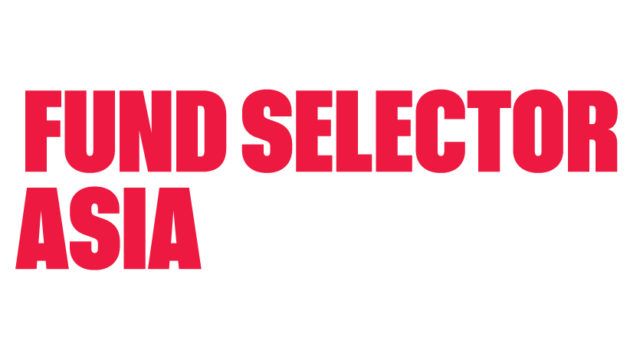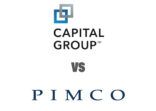Which countries are the VAM funds sold in?
They are sold pretty much from Moscow to Tokyo and everywhere in between. We distribute our products through third-party advisory firms wherever they may be in the world. Our core territories are Africa, Europe Middle East, Asia and Latin America. We have a business relationship with around 450 third-party advisory firms – that relate to many thousands of individual advisers. So we truly are a global business with a very significant global reach.
How did VAM Funds get started and who are the owners?
VAM will be 13 years old next year, based in Luxembourg. We originally third-party distributed our products through the expat-focused IFA channel. As that channel grew, so did the rest of the distribution, which is now at the point where we have key strategic partnerships with virtually all of the offshore life companies in the form of VAM funds in their internal mirror fund ranges. The various registrations that we’ve got around the world have enabled us to broaden our distribution reach, particularly in parts of the world where we have gone more into domestic markets rather than just the expat-facing channel.
Through our Luxembourg-domiciled Ucits IV fund management business, we offer funds across all the main asset classes. Our funds are all fully liquid, all daily dealing with the exception of our two bond funds, which are weekly dealing. All of VAM’s funds are also registered in Singapore with the Monetary Authority of Singapore and with the UK’s FCA. VAM is partly privately owned and also has an institutional shareholder, VP Bank.
How does your product range reflect the differing requirements of investors in countries around the world?
There’s always a degree of regional variance. Our strategic aim is to offer a wide range of funds to cover all the main asset classes, and we have shied away from the more illiquid alternative space. We prefer more transparency with liquid daily dealing funds.
Our Asian Fixed Income Fund has a greater appeal in Asia because people understand the Asian story better.
There’s obviously a degree of affinity with a fund that is invested in the territory and managed by a fund manager in the territory. We’ve always made it easy for people to move across the asset classes or to move up and down the risk spectrum at net asset value to NAV, so there is no cost for doing it. And we try to cater for as wide an array of investment requirements and consumer risk appetite as we can, while retaining our core competency of bringing to market Luxemboug-domiciled Ucits for simple daily dealing fully liquid funds.
What is the global pattern of the VAM fund sector sales and size of total assets?
Our largest existing book of business is in Africa. That’s partly for historical reasons because we have some very strong institutional life company relationships, and those have been in place for many years.
Our business in Europe is, again, a very large book of business partly because we’ve been operating through very strong strategic relationships in Europe for many years. The two biggest growth areas for VAM currently are the Middle East and Asia, and although they are both smaller in terms of funds under management, I would expect within the next 18 to 24 months that Asia will ultimately become our largest territory for business, probably followed by the Middle East, which has grown by 300% this year.
Our assets under management have grown by 25% this year and we are at £600m funds under management. Most of that growth has occurred in the second half of this year.
Which countries in Africa do you do business in, and how easy is it?
We’ve got a very wide distribution in Africa, with South Africa obviously a fairly large part, but we also have business relationships in Botswana, Zambia, Zimbabwe, Mozambique, Kenya, Tanzania and Ghana. Israel, though clearly not in Africa, is also a key country in terms of distribution.
The ease of doing business comes down to the degree of sophistication in the regulatory environment in the country and the degree of regulation. We favour the regulated markets, so obviously South Africa, Kenya and Botswana. There’s a much better regulated financial services industry in those countries. Zimbabwe, Zambia, Malawi, Mozambique and Ghana are slightly more grey markets.
The point that I would emphasise is that VAM itself is not sold direct into the countries where we operate. Our products are bought either through life company products, platforms or bank custody accounts. So in some countries it’s not VAM that needs to be authorised but the product provider. In some countries the fund itself does have to be authorised, for example, in the UK and Singapore.
We are increasingly focusing our strategic development plans where there is either good or increasing regulation. For us as a business, regulation equals sustainability, or certainty, of the business. It also makes it increasingly difficult for other competitors to gain the same level of authorisation and potentially others may have a regulatory lockout.
What are your key distribution channels in the regions of the world?
The third-party IFA advisory channel has been hugely successful for VAM but increasingly we are developing institutional distribution channels, and that has evidenced quite a lot of success. Traditionally that would be family offices, fund of funds and discretionary fund managers looking to make an allocation to one of our funds. But we are also finding that as our assets under management have grown so has the institutional market for our funds.
We are having people knocking on our door because we now come on the radar because the fund is of the size that institutions allocate to and also because of performance. We have got four of our funds in the top-decile funds at the moment.
What is your prediction for the next big investment theme?
The first theme is that we have seen a huge swing towards liquidity. I think IFAs and consumers are increasingly seeking out well-regulated funds in well-regulated jurisdictions that are liquid and daily trading. We’ve seen that shift gather a huge amount of momentum over the past few months.
The second theme is that intermediaries are increasingly looking to outsource asset allocation and discretionary fund managers are now starting to have a place in the offshore market. It’s largely why we launched a managed fund just over a year ago, because we saw this coming. We’re finding that our managed fund is either being used as an ‘outsourced product solution’ or as a core hold in which the intermediary can then satellite asset allocate around.
Are you planning to enter any new geographical countries/markets?
In terms of channels, the institutional side is certainly a focus within the business, as is our retail third-party distribution side. We fully expect to see a continuation of the growth we are seeing currently.
The third channel is that VAM offers to host other managers who are looking for a platform. There are fund managers out there who are very good at managing money but don’t want to be worried with the compliance, regulation or the marketing, and we are able to provide all of those services to other managers who will get immediate distribution.
In November, we launched an Americas All Cap Fund covering Canada, the US and all of Latin America. We are also launching the VAM Enhanced Equity Fund this year, a trend fund with access to an equity return by taking a position on the S&P index – it will be long or short or in cash, only one of three positions. That fund is managed by Fleming Family & Partners. In the pipeline we also have a clean energy fund that is fully liquid daily dealing.
Are there any specific marketing drives into new territories for next year?
Hong Kong will be the first. We will be applying and obtaining an SFC authorisation in 2014 and we will then enter the Hong Kong market. We will be applying for authorisation in South Africa, which will enable us to diversify our distribution channels in the region.

















